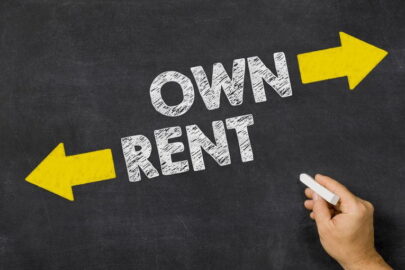The UK is a bit odd when it comes to home ownership. We’re one of the only countries in the world that has such a high percentage of people who own their own home and for years it was seen as a sign of great progress.
Dinner party conversations revolved around how much house prices had increased, people felt good about their financial security and in turn spent money, which meant the economy boomed.
Then it all went horribly wrong. These figures show that what was once a rite of passage, owning your own home, has become something of an unattainable life goal for many.
The Resolution Foundation puts the drop in home ownership down to the fact that incomes haven’t kept up with house price inflation.
But that’s a pretty simplistic view and I feel there are a number of other factors that have influenced the sharp drop.
One is undoubtedly the rise in the number of people who are self-employed. A report from the Office of National Statistics puts that number at 4.6m, or 15% of the economically active people in the UK.
That’s 4.6m people who could potentially own a home but who probably aren’t going to meet the criteria, or the risk appetite, of the High Street lenders who are able to fill their lending quotas with plain vanilla applicants that have two employed incomes.
And that figure is just going to rise. In 1975 just 8.7% of working people were self-employed, by 2008 it was 13%.
The vast majority of the self-employed represent good borrowers, but their situations may be complicated. They may have multiple income sources, or be a repetitive contract worker, and for many High Street lenders that means it takes a more flexible approach to underwriting than their tick box system will allow.
When we were researching the market in advance of launching The Mortgage Lender we found time and time again that introducers wanted more flexibility for their self-employed clients. They wanted a lender who would understand their clients’ circumstances and take a pragmatic view of the situation rather than declining an application because it didn’t fit exactly into a certain box.
As a consequence, we developed our range to include products that meet the needs of those people.
And we’ve been creative in how we view self-employed borrowers. We’ll lend up to 85% for those who have been trading more than two years and 80% for those with a record of between one and two years.
We’ll accept contract workers who’ve got six months of continuous service and six months of contract to run – not necessarily with the same company.
The Mortgage Lender will also look at multiple sources of income for self-employed applicants and consider 100% of all self-employed income. Crucially, for people who are building and investing in a business, we’ll look at dividends and retained income in a limited company.
While The Mortgage Lender isn’t going to reverse the decline in home ownership, we’re certainly providing more choice for those borrowers who have been ignored by the High Street and who want to be supported by lenders who seek to understand their position.
Pete Thomson is sales and marketing director at The Mortgage Lender
